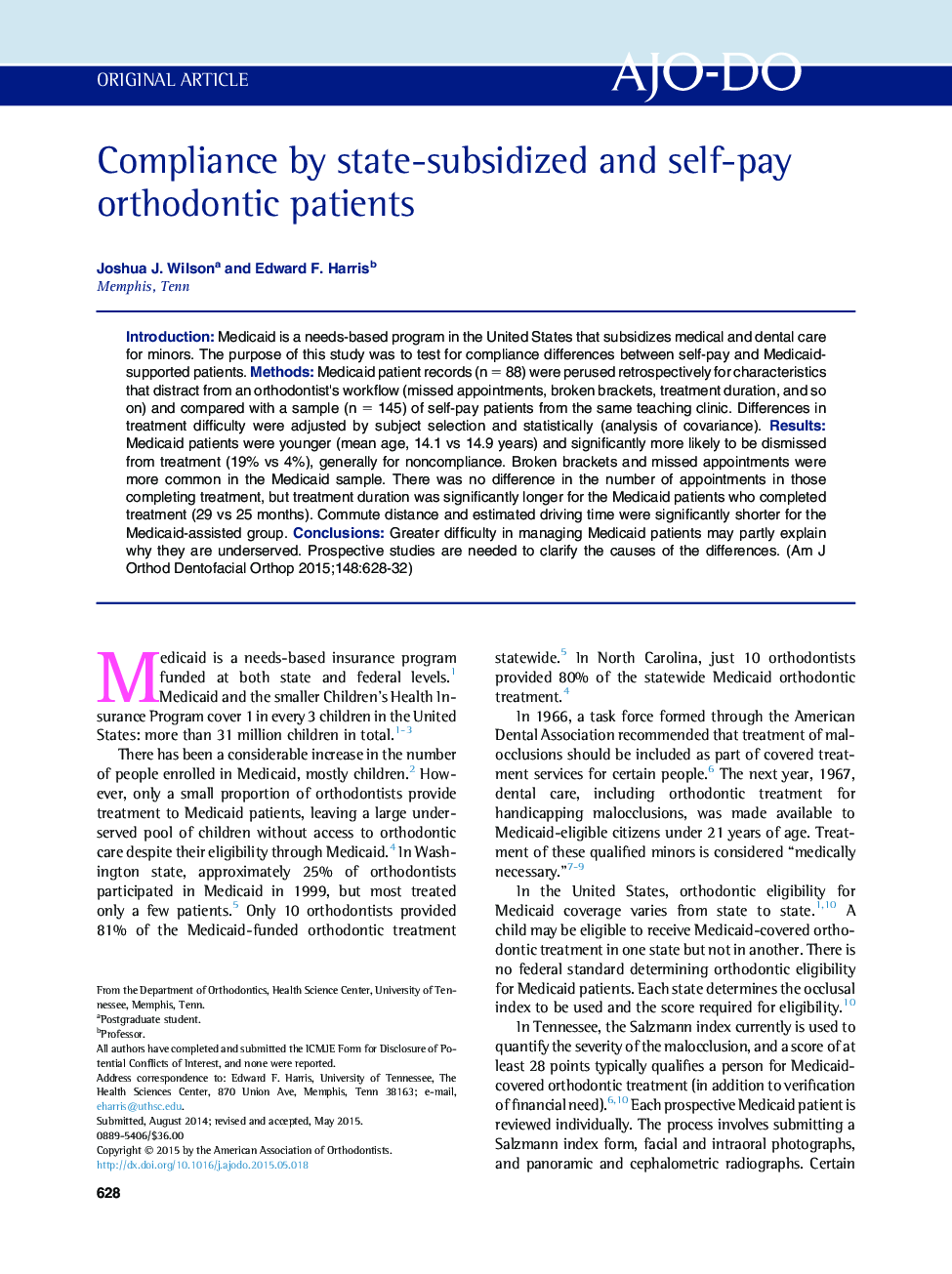| Article ID | Journal | Published Year | Pages | File Type |
|---|---|---|---|---|
| 3115868 | American Journal of Orthodontics and Dentofacial Orthopedics | 2015 | 5 Pages |
•We studied compliance differences between self-pay and Medicaid-supported patients.•Differences in treatment difficulty were adjusted by case selection and statistically.•Medicaid patients missed significantly more appointments on average.•Treatment duration was 4 months longer for Medicaid patients to complete treatment.•Medicaid patients did not continue treatment as frequently as self-pay patients.
IntroductionMedicaid is a needs-based program in the United States that subsidizes medical and dental care for minors. The purpose of this study was to test for compliance differences between self-pay and Medicaid-supported patients.MethodsMedicaid patient records (n = 88) were perused retrospectively for characteristics that distract from an orthodontist's workflow (missed appointments, broken brackets, treatment duration, and so on) and compared with a sample (n = 145) of self-pay patients from the same teaching clinic. Differences in treatment difficulty were adjusted by subject selection and statistically (analysis of covariance).ResultsMedicaid patients were younger (mean age, 14.1 vs 14.9 years) and significantly more likely to be dismissed from treatment (19% vs 4%), generally for noncompliance. Broken brackets and missed appointments were more common in the Medicaid sample. There was no difference in the number of appointments in those completing treatment, but treatment duration was significantly longer for the Medicaid patients who completed treatment (29 vs 25 months). Commute distance and estimated driving time were significantly shorter for the Medicaid-assisted group.ConclusionsGreater difficulty in managing Medicaid patients may partly explain why they are underserved. Prospective studies are needed to clarify the causes of the differences.
